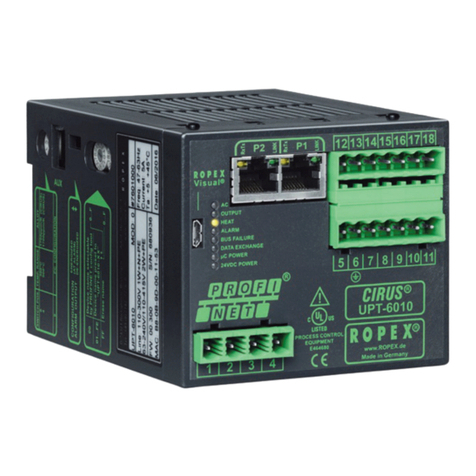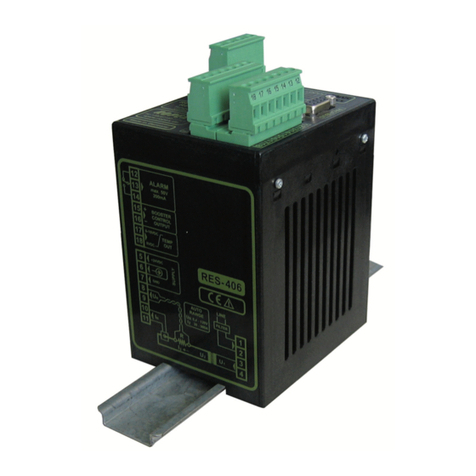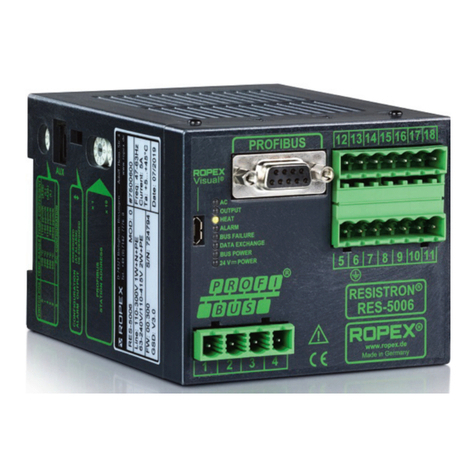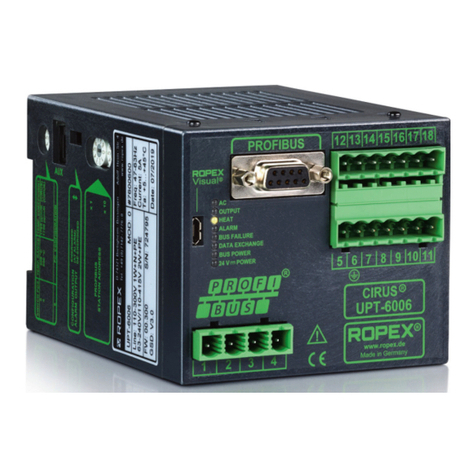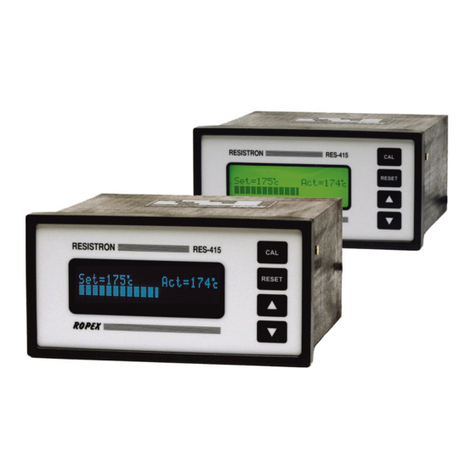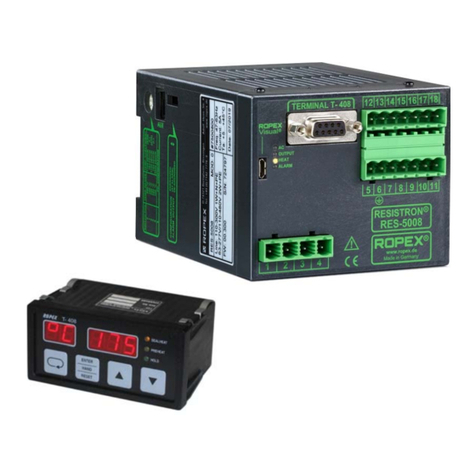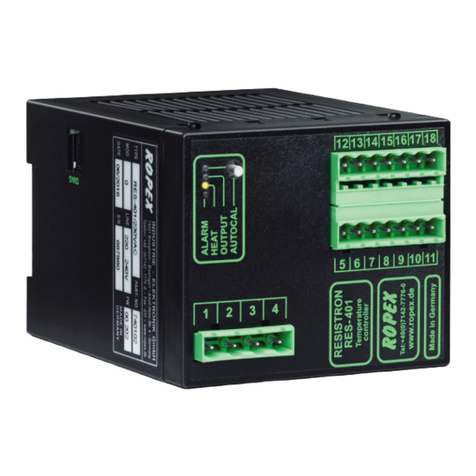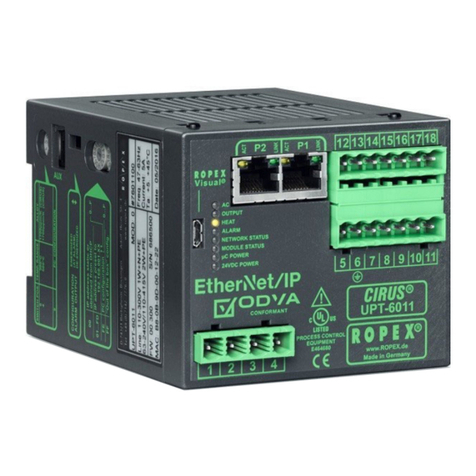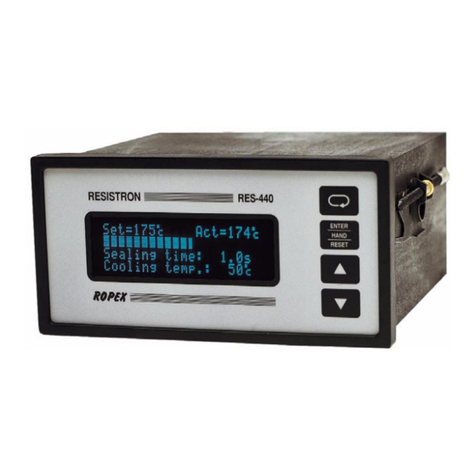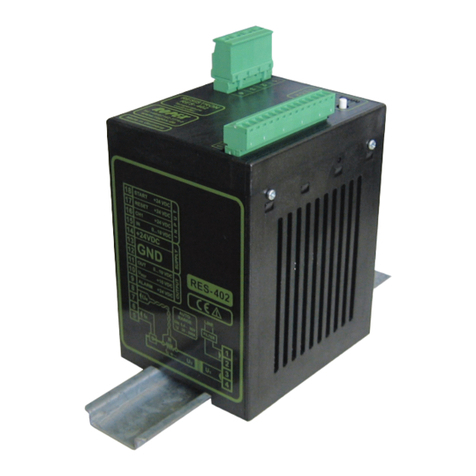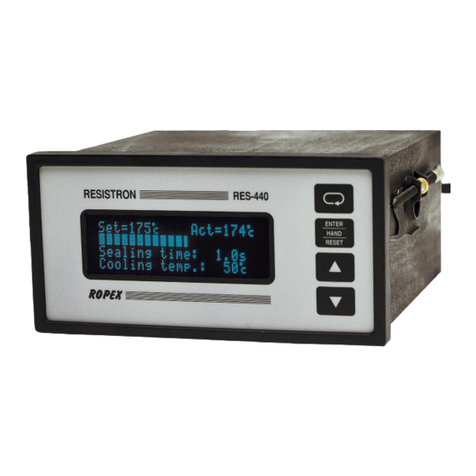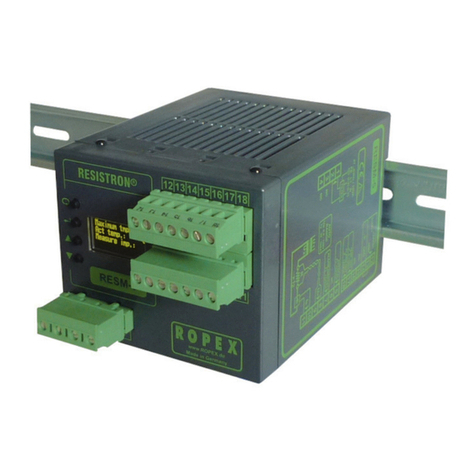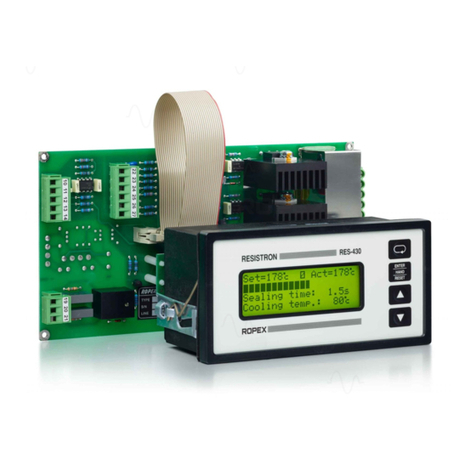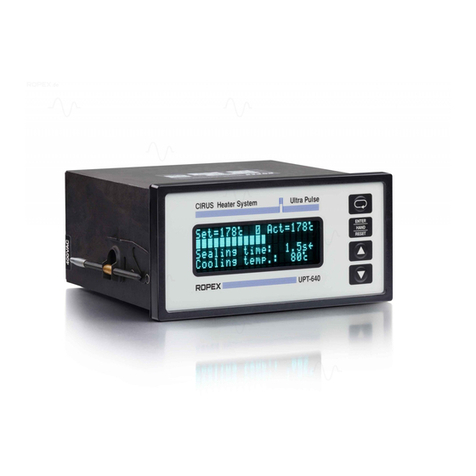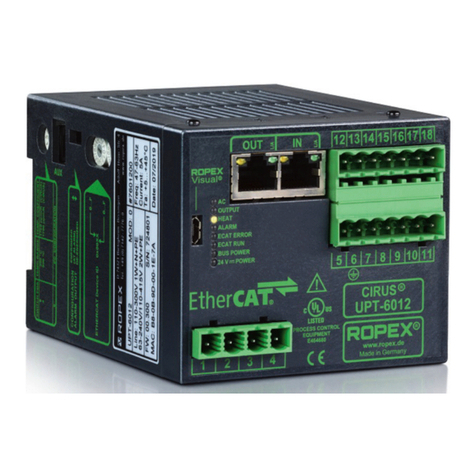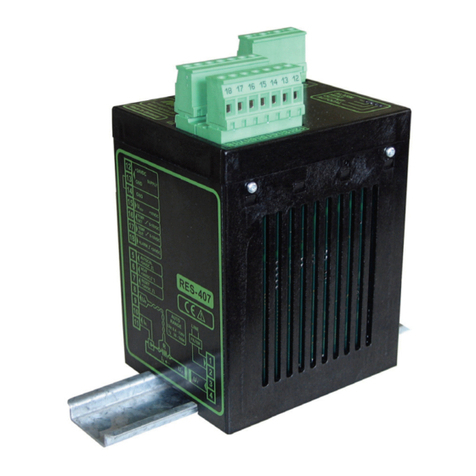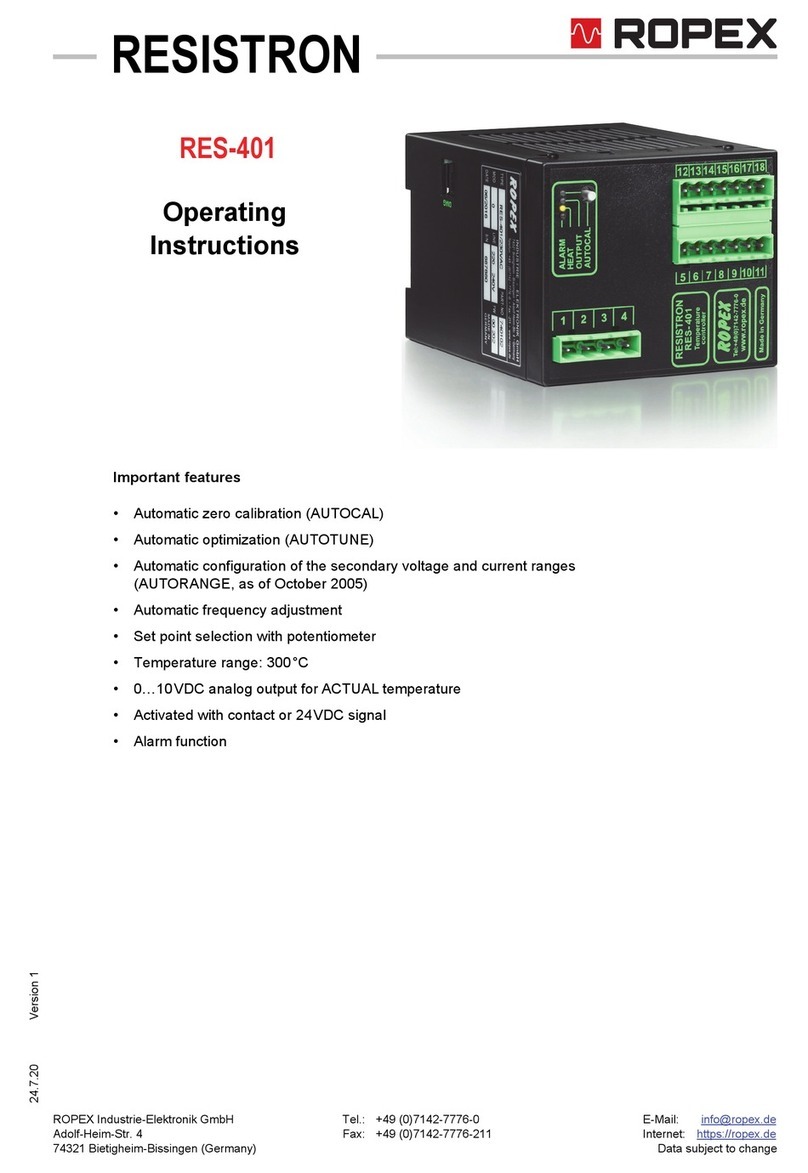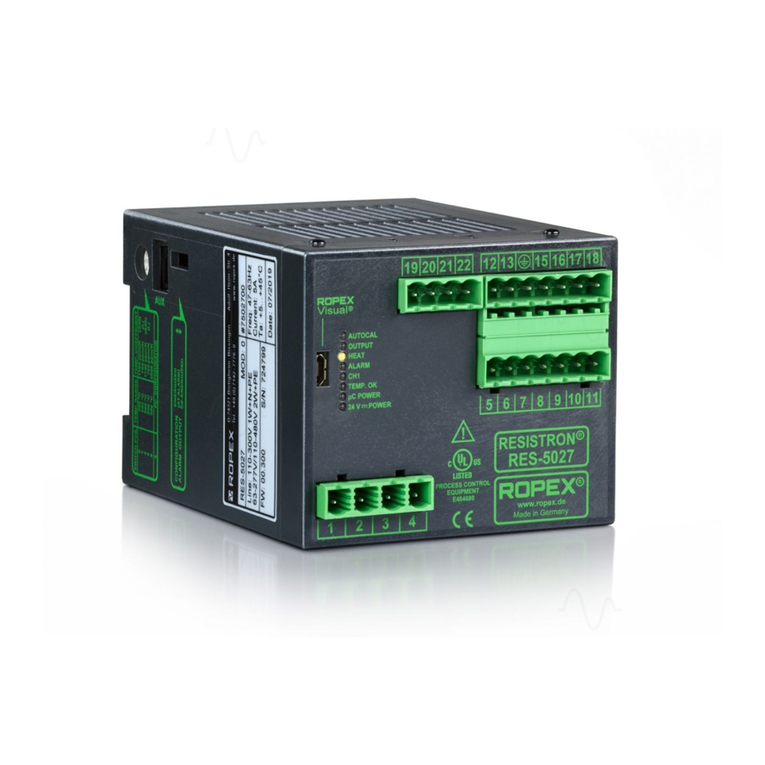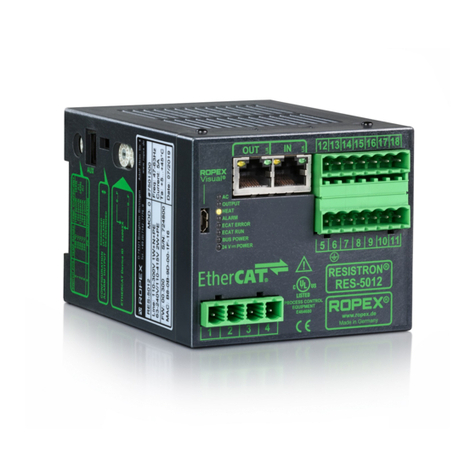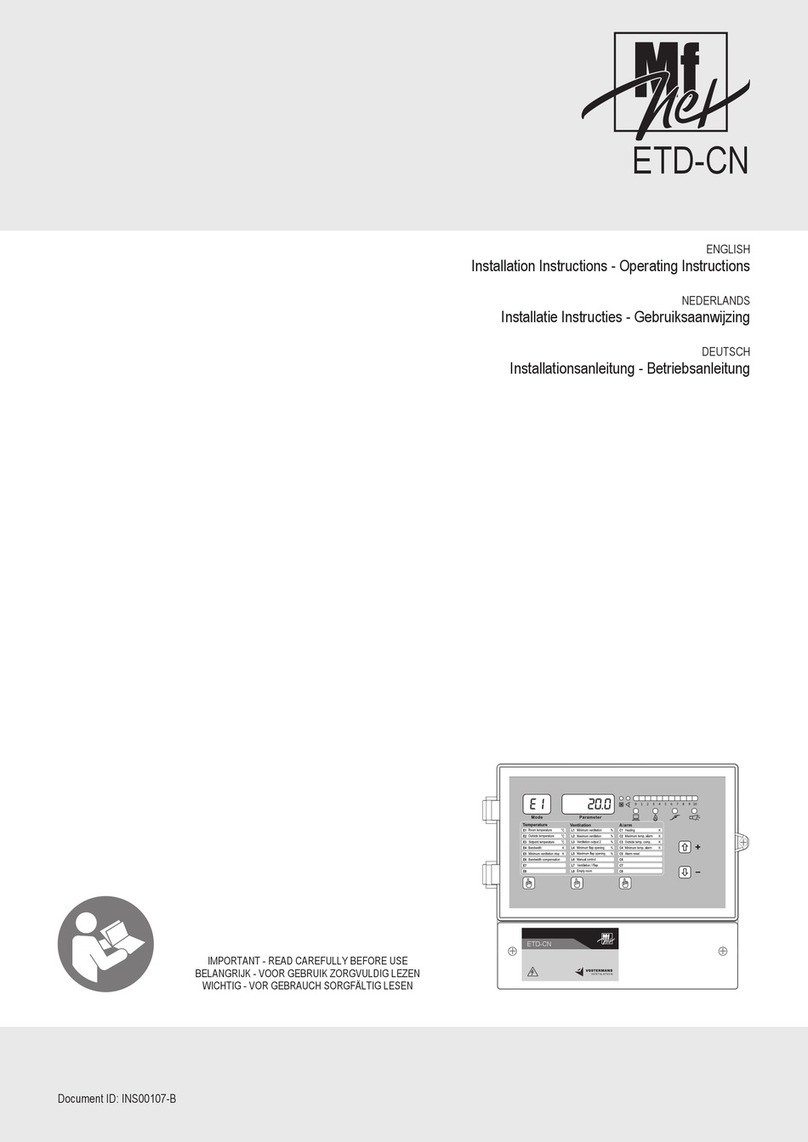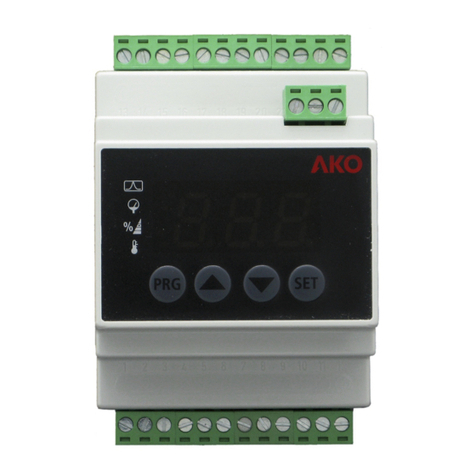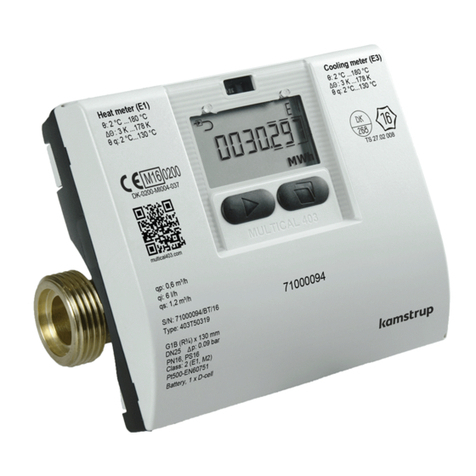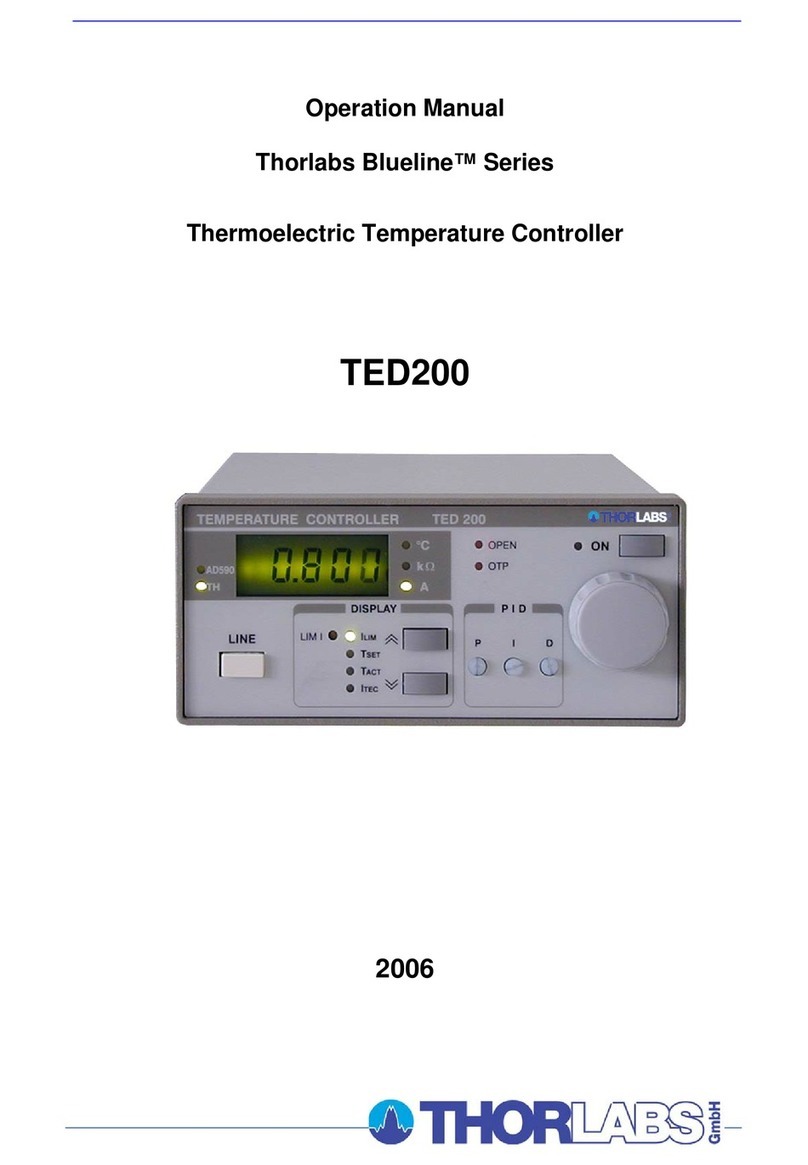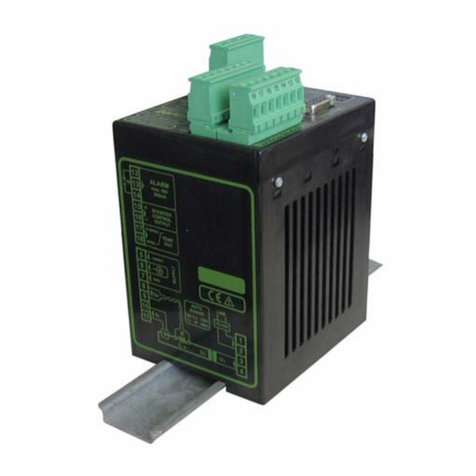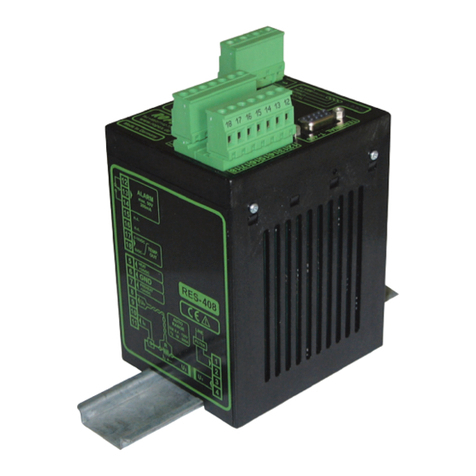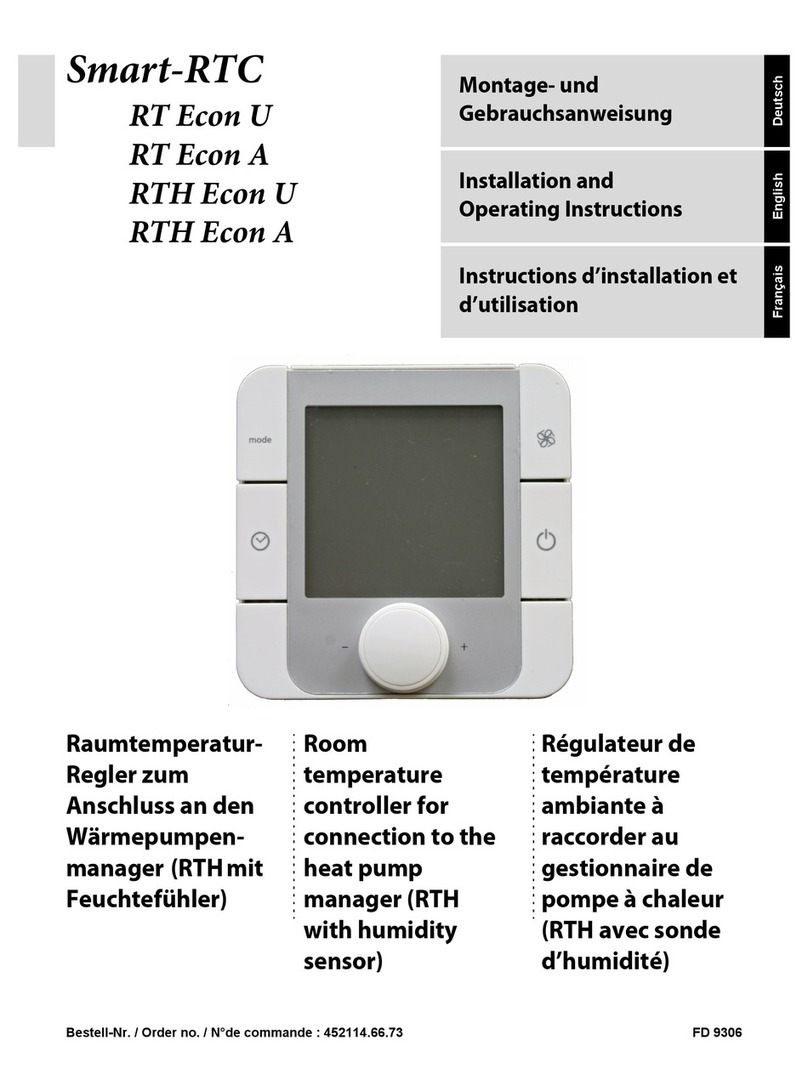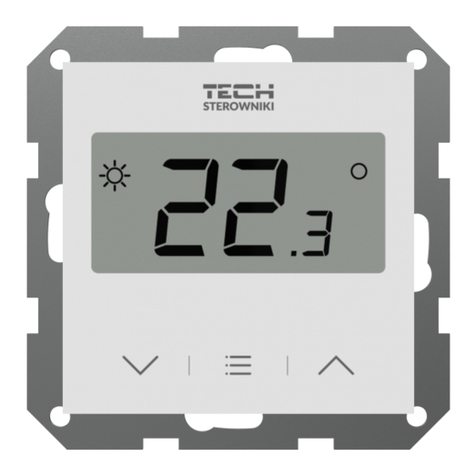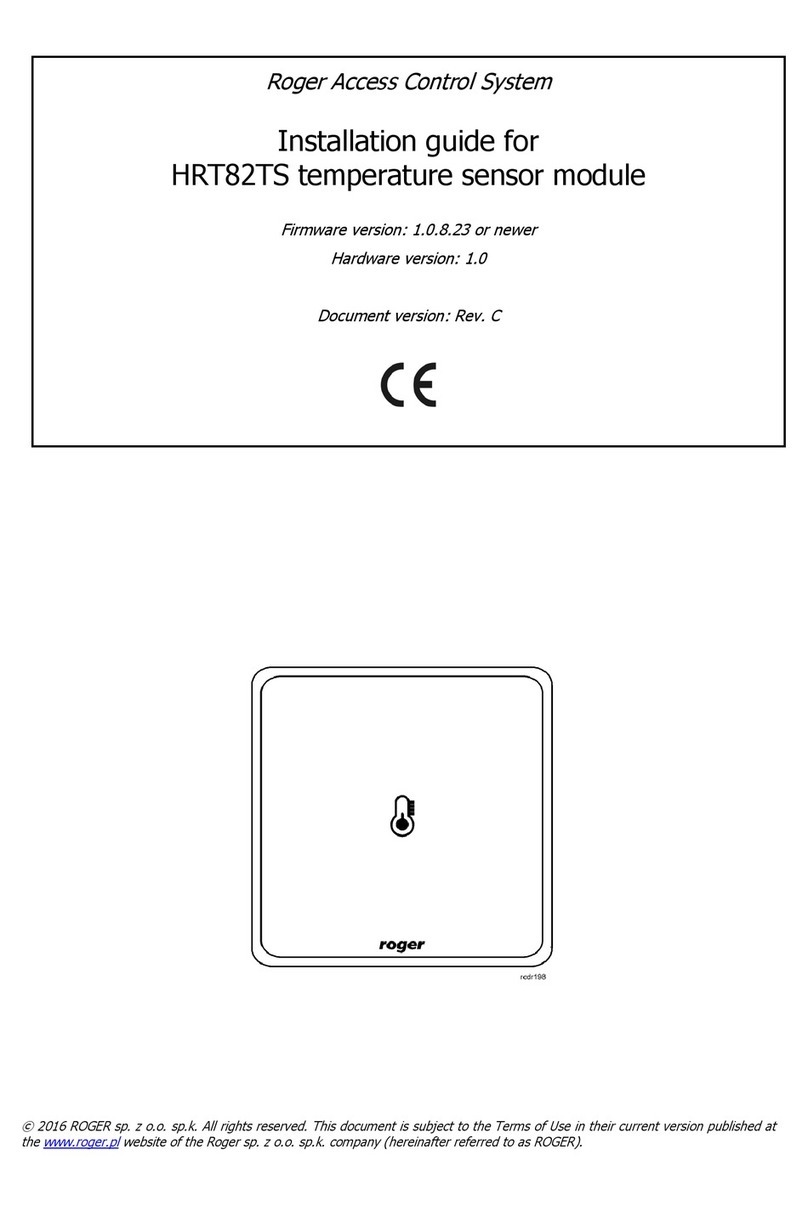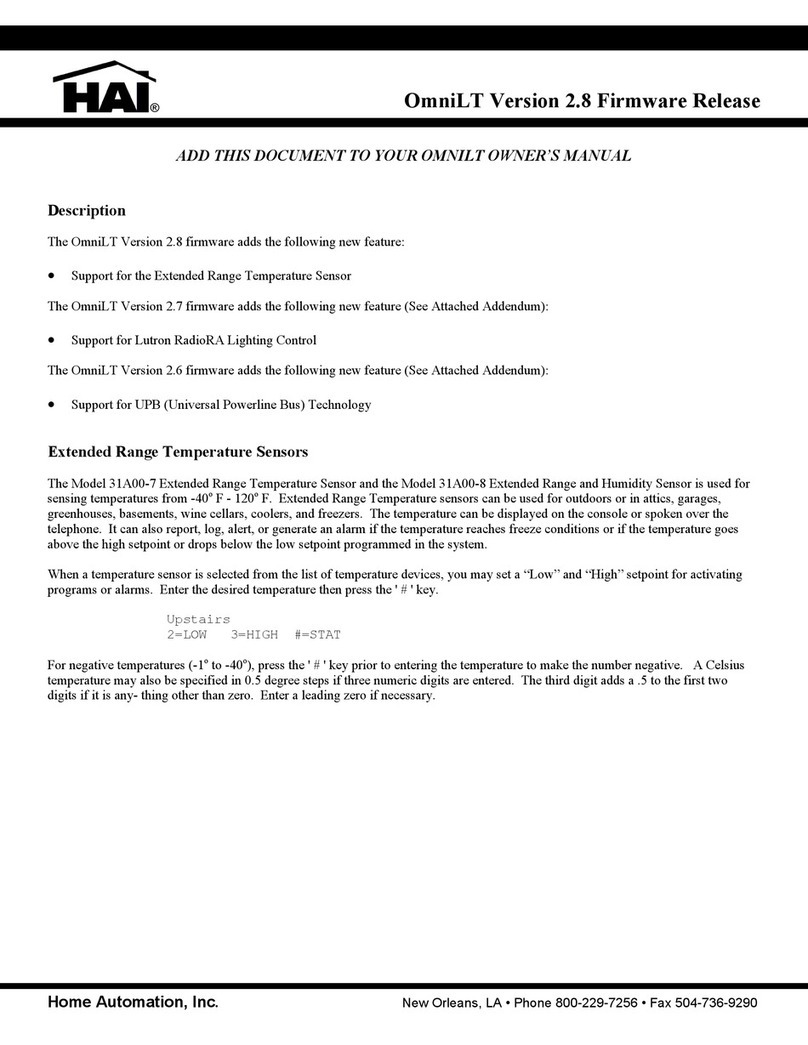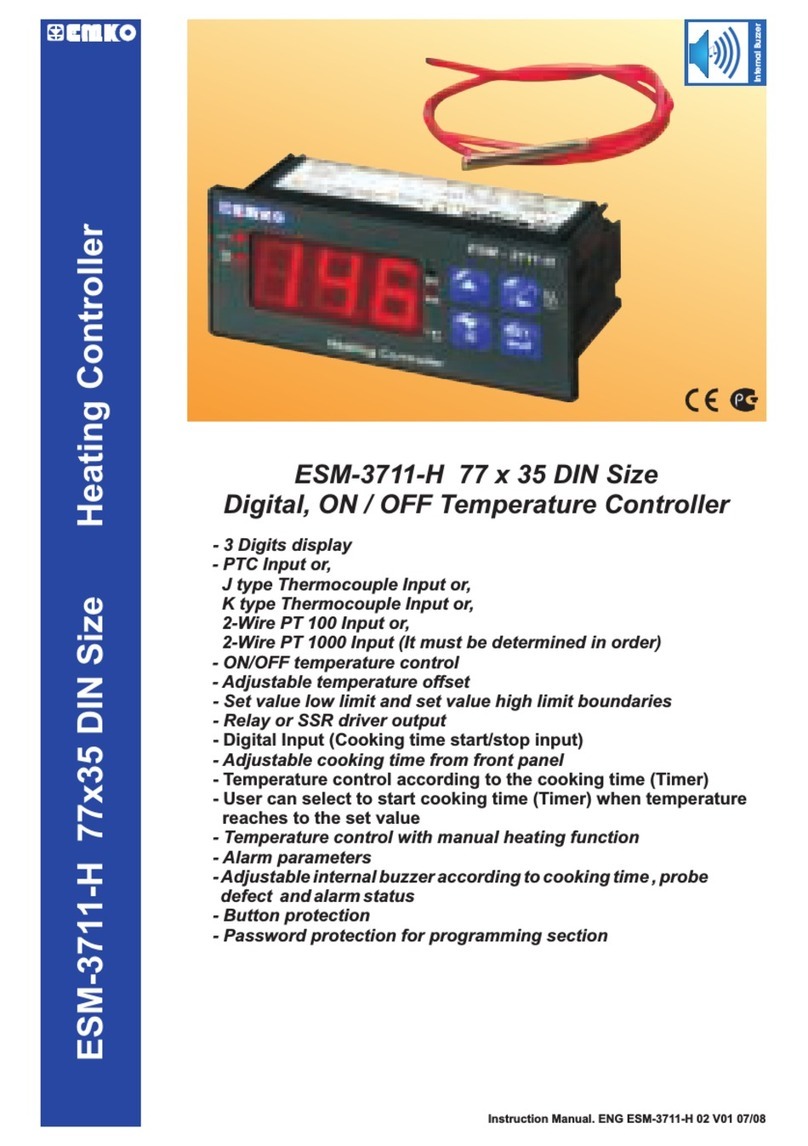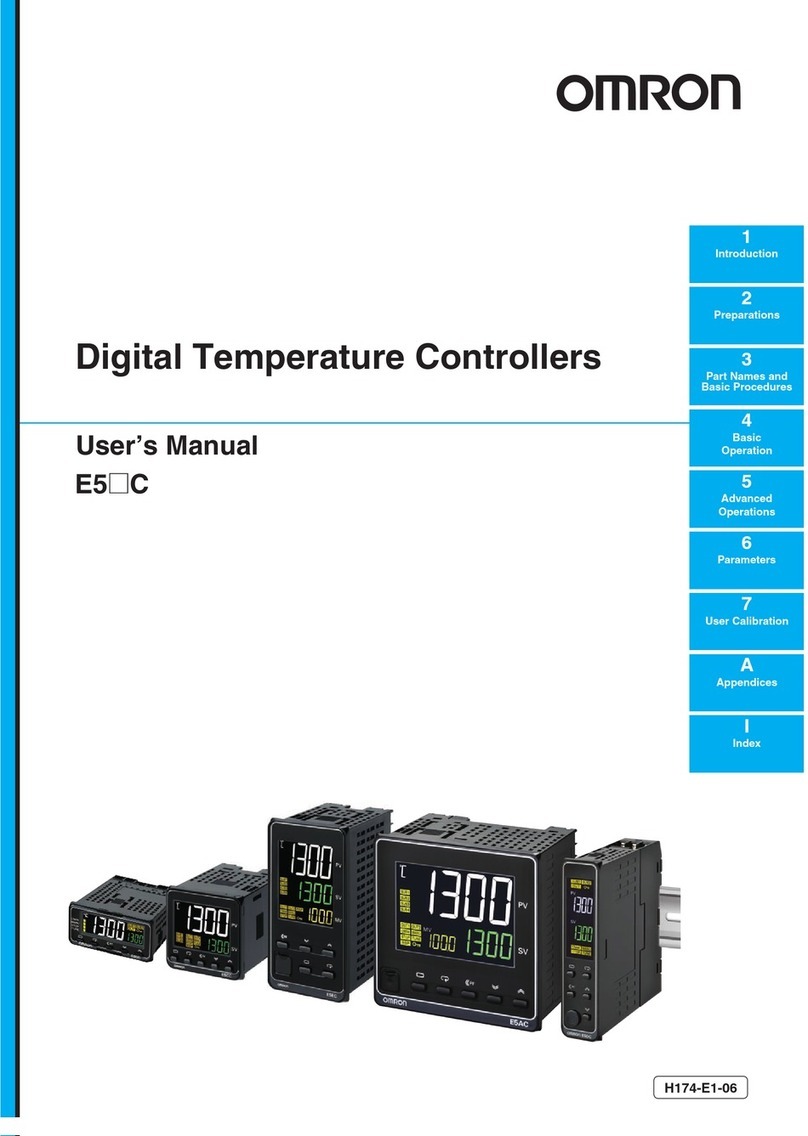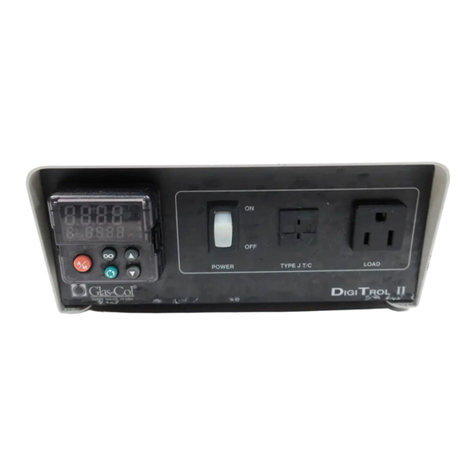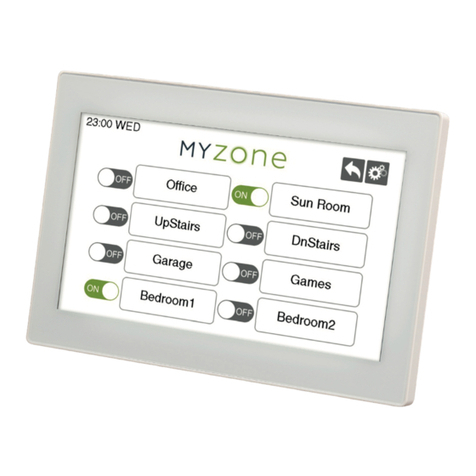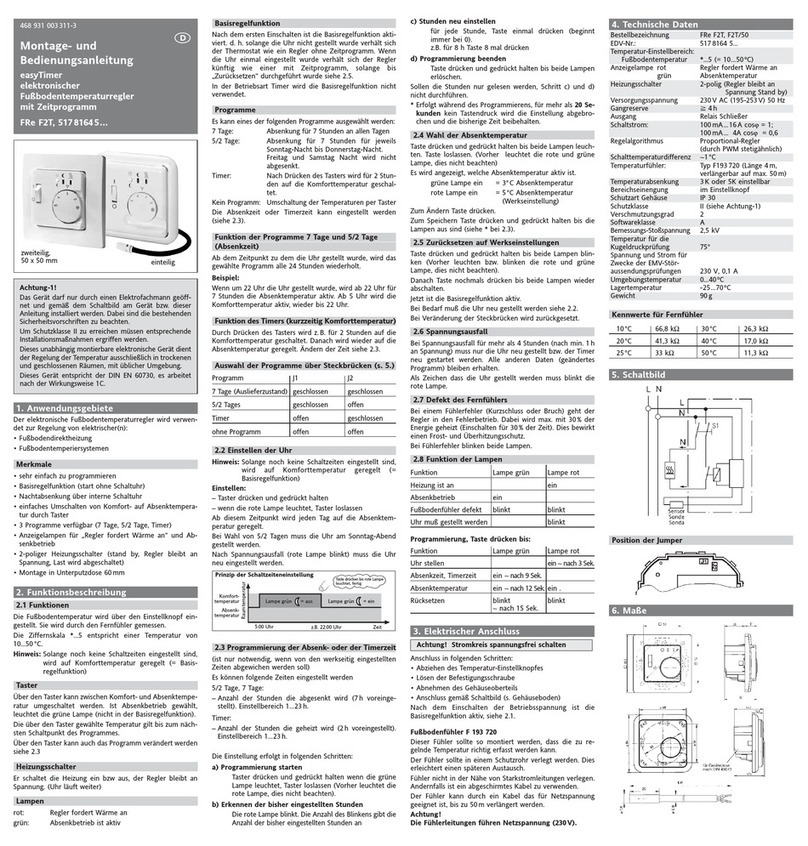
Installation
Page 10 UPT-6011
7Installation
See also section 1 "Safety and warning notes" on
page 3.
Installation and startup may only be
performed by technically trained, skilled
persons who are familiar with the associated risks
and warranty provisions.
7.1 Installation steps
1. Please refer to the safety and warning notes
(section 1 "Safety and warning notes" on page 3).
2. The information provided in the customized ROPEX
Application Report, which is prepared by ROPEX
specifically for each application, should be heeded
at all times.
3. All electrical components, such as the controller, the
impulse transformer and the line filter, should be
installed as close as possible to the UPT sealing
bar(s) in order to avoid long wires.
4. Connect the voltage measurement cable UR directly
to the UPT sealing bar and lay it twisted to the con-
troller (UML-1 voltage measurement cable
section 4 "Accessories and modifications" on
page 6).
5. Ensure an adequate cable cross-section for the pri-
mary and secondary circuits (Application Report).
6. Use only ROPEX impulse transformers or transfor-
mers approved by ROPEX. Please note the power,
the duty cycle and the primary and secondary
voltages (Application Report).
7.2 Installation steps
1. Please refer to the safety and warning notes
(section 1 "Safety and warning notes" on page 3).
2. The information provided in the customized ROPEX
Application Report, which is prepared by ROPEX
specifically for each application, should be heeded
at all times.
3. All electrical components, such as the controller, the
impulse transformer and the line filter, should be
installed as close as possible to the UPT sealing
bar(s) in order to avoid long wires.
4. Connect the voltage measurement cable UR directly
to the UPT sealing bar and lay it twisted to the con-
troller (UML-1 voltage measurement cable
section 4 "Accessories and modifications" on
page 6).
5. Ensure an adequate cable cross-section for the pri-
mary and secondary circuits (Application Report).
6. Use only ROPEX impulse transformers or transfor-
mers approved by ROPEX. Please note the power,
the duty cycle and the primary and secondary
voltages (Application Report).
7.3 Installation procedure
Proceed as follows to install the CIRUS temperatue
controller UPT-6011:
1. Switch off the line voltage and verify that the circuit
is de-energized.
2. The supply voltage specified on the nameplate of
the CIRUS temperatue controller must be identical
to the line voltage that is present in the plant or
machine. The line frequency is automatically
detected by the CIRUS temperatue controller in the
range from 47Hz...63Hz.
3. Install the CIRUS temperatue controller in the
electrical cabinet on a standard top hat rail (DIN
TS35 rail, according to DIN EN 50022). If several
controllers are installed on one top hat rail, the
minimum clearance specified in section 5 "Technical
data" on page 8 must be allowed between them.
4. Wire the system in accordance with the instructions
in section 7.4 "Power supply" on page 12,
section 7.7 "Wiring diagram (standard)" on page 14
and the ROPEX Application Report. The information
provided in section 7.4 "Power supply" on page 12
must also be heeded additionally.
An overcurrent protective device (e.g. a fuse) with a
maximum rating of 10A must be fitted when the
controller is installed provided this is adequate for
the heatsealing application. If not, two separate
overcurrent protective devices should be provided,
one for the controller and one for the application
(ROPEX Application report).
The minimum possible specification for this device
must be entered in the ROPEX Application Report
based on the calculated currents. If a larger
overcurrent protective device is fitted, you must
match the current carrying capacity of the other
components accordingly (e.g. cables, impulse
transformer etc.).
5. Connect the CIRUS temperatue controller to the




















